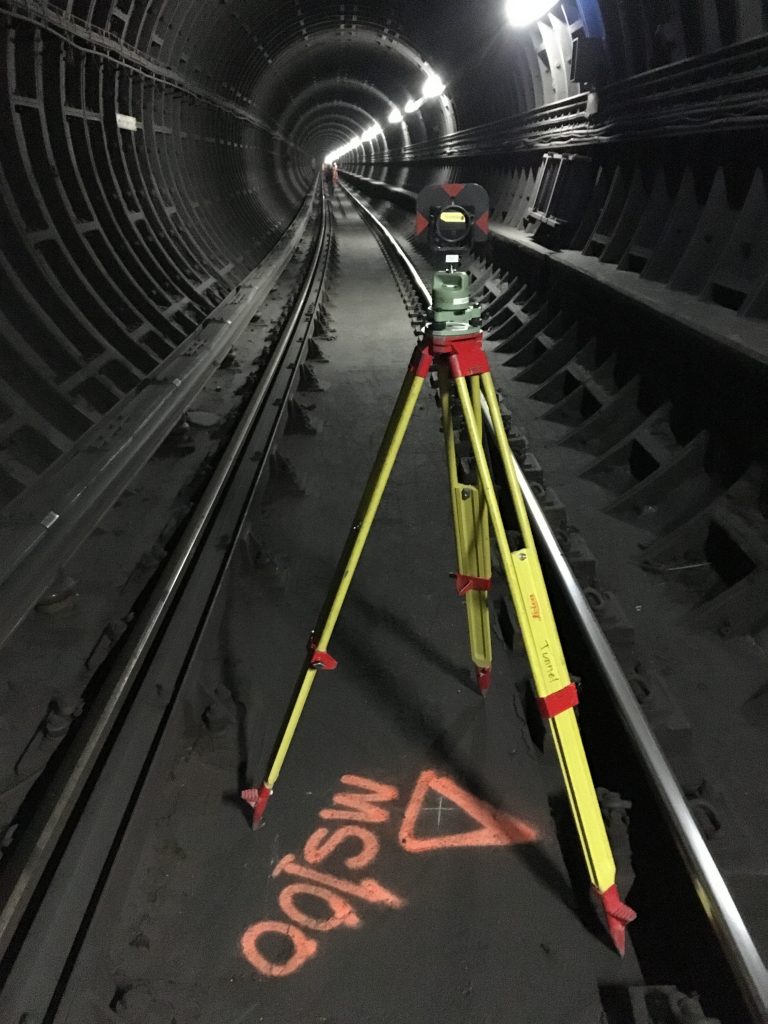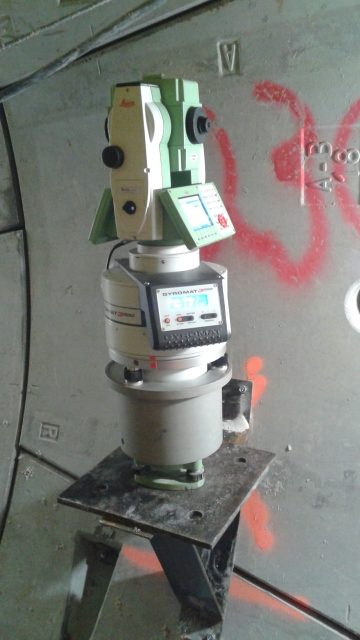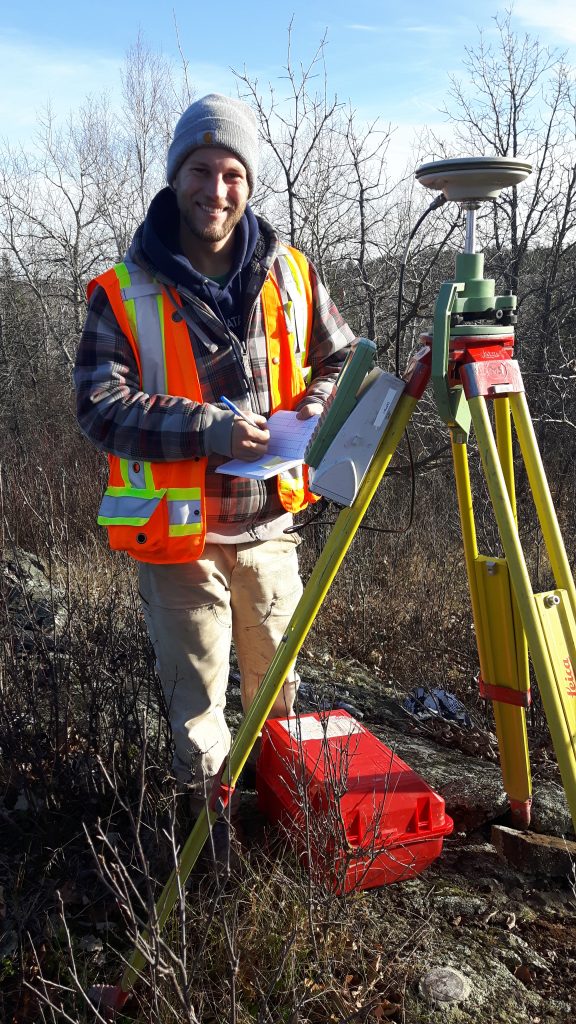Monteith & Sutherland crews work with CRS Tunnelling Canada project team to ensure the microtunnelling of the 1200mm storm sewer at Dixie-QEW is going per design alignment.
Precise traversing, while crawling, bending and crouching, and carrying the survey equipment all the way to the heading in and back to the portal is a very demanding task. Our crews do an outstanding job, delivering excellent surveys data sets, and performing all tasks in a safe manner.



